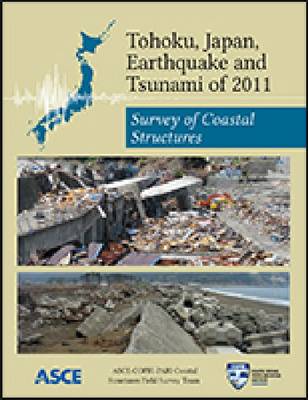Sponsored by the Coasts, Oceans, Ports, and Rivers Institute of ASCE; Port and Airport Research Institute of Japan.
On March 11, 2011, a magnitude 9.0 earthquake rumbled off the east coast of Japan, followed by a tsunami that generated waves more than 18 meters high. The earthquake and tsunami caused devastation throughout the Tohoku and Sendai regions of Japan, killing nearly 16,000 people and causing damage estimated at more than US$126 billion.
For seven days in May 2011, an ASCE/COPRI Coastal Structures Team investigated the earthquake and tsunami effects specific to engineered coastal structures, coastal landforms, and coastal processes in northeast Japan. Joined by colleagues from Japan's Port and Airport Research Institute, the survey team observed five categories of coastal protection structures: coastal dikes, tsunami seawalls, floodwater gates, breakwaters, and vegetated greenbelts. This report provides background to the field investigation, including an event summary, the tectonic and geologic setting, and the generation, propagation, and runup of the tsunami. It then describes 11 mechanisms causing damage or failure and includes photographs illustrating the effects each mechanism. Finally, the report presents lessons learned regarding what worked and what didn't and how this knowledge can be used to engineer against future natural disasters.
For coastal engineers, structural engineers, geotechnical engineers, and disaster risk managers, the observations and analysis in this report provide critical information for engineering infrastructure that withstands major earthquake and tsunami events.
- ISBN10 0784477663
- ISBN13 9780784477663
- Publish Date 1 February 2013
- Publish Status Active
- Publish Country US
- Imprint American Society of Civil Engineers
- Format eBook
- Pages 116
- Language English
